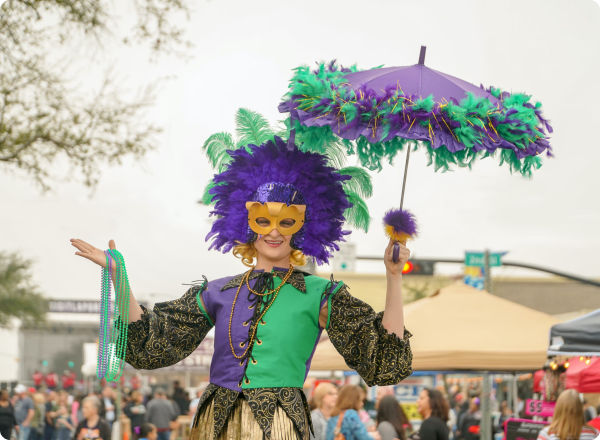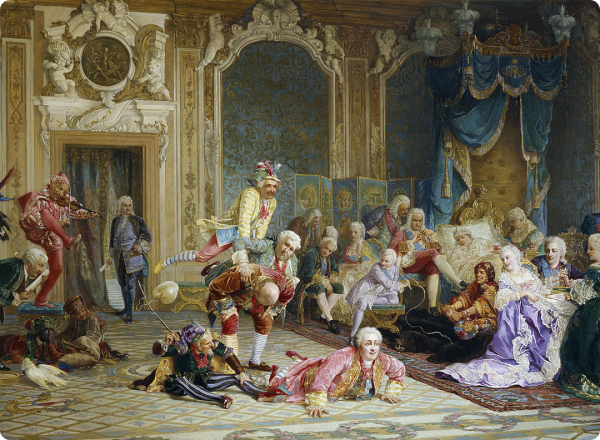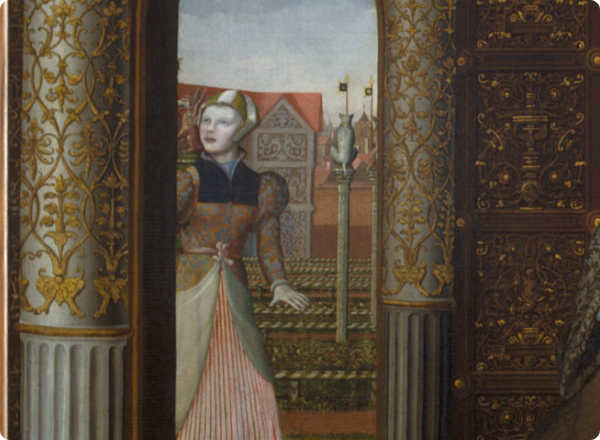Male and Female Jesters
When conjuring an image of what a jester once looked like from the days of old, odds are you picture a man with motley clothing, a scepter and hat with bells. However, history can confirm that men were not the only ones to don the colourful jester costume.

While the majority of jesters throughout history were men, there are still records of female jesters or the ‘jestress’. Both male and female jesters played an important part in history, especially court life where they entertained nobility and some even had the ear of the reigning monarch. Many female jesters were seen to play the part of loyal companion and dutiful entertainer.
The role of the comedic entertainer goes back beyond the Middle Ages however, to times of Ancient Greece during the 7th Century BCE. The Dorian Mimes were the jesters of their day and gained their name from their performance which consisted of mimicking others, especially notable characters of the time. Women sought to be seen in the role of the performer and many joined the troops of the Dorian Mimes and acted in the role of the female counterparts in their performances.
Women also appeared during Medieval England in the role of the Gleemaidens. These were the female version of the Gleemen, who were essentially minstrels, troubadours, dancers, or acrobats. The Gleemaidens worked both on their own acts and helped play the part of an assistant to a Gleeman.
The Commedia dell’arte was an Italian primitive form of theater that would expand and grow throughout Europe. The characters would typically portray either the roles of masters, servants, or lovers and these would be caricatured to create well known personas. They would wear masks made of leather and creative costumes with excessive details.
The Commedia dell’arte were often street performances and hence had very minimalistic sets and their act would be mostly improvisation. These acts included dancing, acrobatics, music, and of course comedy.
Both men and women played a part in the Commedia dell’arte and would be dressed in typical comedic fashion to represent their characters. The men would typically play the two parts of the clever rogue and the simple oaf that would often be victim to the rogue’s scheming. The female parts would typically play the role of the woman stuck in a love triangle between the two men.

Jesters of empress Anna Ioanovna by V.Jacobi (1872)
Famous Female Jesters

Jane Foole in Henry the Eighth and His Family (1545)
Throughout history there are some notable female jesters that found their share of fame. Jane the Fool or Jane Foole as she was also known was a female jester during the 1500’s in the English court during the reign of King Henry VIII. She was to be the first female court jester recorded in history. Jane Foole was thought to have entertained notable figures such as Catherine Parr, Anne Boleyn, and Mary Tudor.
Mathurine de Vallois served at the French court for King Henry III, King Henry IV, and King Louis XIII. Throughout the Middle Ages, we can see that there was a wide range of jester costumes employed, Mathurine’s collection of costumes consisted of an Amazon warrior equipped with a wooden sword. Mathurine was said to even stop an escaping assassin who attempted to kill King Henry IV, by barring his exit until help arrived.
Some other female jesters and fools that are mentioned throughout history include Thomasina who was the daughter of the professional jester employed by the Bowes Lyon family, Nicola the Fool (known as La Jardinière) who entertained Mart Stuart of Scotland, and Maria Barbara Asquin who entertained Queen Isabel of Spain.

